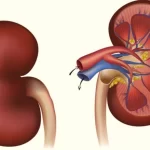Yogasanas to control diabetes. Due to obesity and gross body, the chances of getting many diseases increase. Diabetes is one of them. Although there are many causes of diabetes, obesity is the most likely cause of diabetes. When people start getting harmed by obesity, then they start taking many measures to reduce obesity. Do you know that yoga can also help you control diabetes and obesity? There are many yoga poses for diabetes that can help you get control of the disease.
Today here you are being given information about the main asanas to get control of diabetes and obesity. By this, you will be able to make yourself healthy.
Obesity can become the cause of diabetes
Today obesity has become a common disease. Many people remain troubled due to obesity. Obesity increases the chances of getting a variety of diseases, such as diabetes. That’s why people go to the gym to reduce their excess weight or to reduce obesity, and control their diet. One also does yoga (yoga Mudrasana) to reduce obesity, all the asanas described here is especially useful for the stomach.
List of asanas to control diabetes-obesity
Matsyasana
Sarvangasana
uttanpadasana
Halasan
Naukasana
Pawanmuktasana-1
Pawanmuktasana-2
Yogasanas to control diabetes do Matsyasana
How to do Matsyasana?
Sitting in the position of Padmasana, with the help of the hands, lie down with the elbows behind.
Keeping the palms behind the shoulders, taking support from them, bend the neck as far back as you can. The back and chest are raised, and the knees should be on the ground.
Holding the toes with the hands, rest the elbows on the ground. Keep breathing in.
While leaving the asana, come back to the position in which you started, or lie down in Shavasana (yoga for diabetes control) by straightening the legs, and keeping the shoulders and head on the ground.
This is a competitive posture of Sarvangasana, so it should be done after Sarvangasana.
benefits of fishing
This is the best posture for the stomach. Relieves constipation by activating the intestines.
Makes thyroid, parathyroid, and adrenal glands healthy.
It is beneficial when the cervical pain, or the backbone of the cervix, is enlarged.
The umbilical cord goes away. Cures lung diseases- asthma, respiratory disorders, etc.
Yogasanas to control diabetes do Sarvangasana
How to do Sarvangasana?
First of all, lie down on your back. Join the feet. Keep the hands by the side on both sides, palms facing the ground. Breathing in, slowly raise the legs to 30 degrees, then 60 degrees, and finally 90 degrees. While raising the legs, you can take help from the hands.
If it is not straight at 90 degrees, then by moving the feet at 120 degrees, raise the hands and apply them behind the waist (yoga for diabetes control). Keep the elbows on the ground.
Keep the legs straight together. Claws stretched upwards, and eyes closed. During this, keep an eye on the toes. Starting from two minutes, gradually this asana can be done for half an hour.
While coming back, keeping the legs straight, bend backward slightly. Remove both the hands from the waist and straighten them on the ground. Now by pressing the ground with the palms, in the same sequence as you had risen, slowly straighten the back first, and then the legs on the ground.
For as long as the Sarvangasana is done, rest in Shavasana for about the same time.
Benefits of Sarvangasana
It makes the thyroid active and healthy. Therefore, obesity, weakness, decrease in height, fatigue, etc. disorders are removed.
Strengthens adrenal, spermatic cord, and ovarian glands.
All other benefits are similar to headstand, but this asana has the characteristic that those for whom headstand is prohibited can also do it.
This asana has also been found useful for 2-3 states of asthma; Because the shoulders are stable in this posture. Due to the weight of abdominal organs, intestines, etc. falling on the phrenic muscle, and taking part in breathing and breathing, the tone of the diaphragm improves.
With this asana, the thyroid, and pituitary gland are mainly active, it is especially useful in height growth.
Special instructions for Sarvangasana
Competitive or complementary to this asana is Matsyasana. Therefore, before resting in Shavasana, do Matsyasana (yoga Mudrasana). It has more benefits.
Yogasanas to control diabetes do Uttanpadasana
How to do Uttanpadasana?
To reduce obesity, lie down on your back. Palms to the ground, legs straight, and toes joined. Now breathe in and slowly raise the legs to 1 foot (about 30 degrees). Remain in this position for some time.
After this, while coming back, slowly lower the feet to the ground, not with a jerk. Take some rest and then do the same action. This should be done 3 to 6 times.
Benefits of Uttanpadasana
This asana makes the intestines strong and healthy, removes constipation, gas, obesity, etc., and ignites the gastric fire.
Divergence of the navel, heart disease, and stomach pain, and is also useful in respiratory diseases.
It is especially beneficial in back pain if done with each leg gradually.
Special Instructions for Uttanpadasana
Those who have more pain in the back should practice it with each leg respectively.
Yogasanas to control diabetes do Halasana
How to do Halasana?
Lie down on your back, now while breathing in, slowly raise your legs. After raising the first 30 degrees, then 60 degrees, then 90 degrees, move the legs towards the back of the head, and while exhaling while raising the back also.
Let the feet rest on the ground behind the head. Breathing speed will be normal. Initially, the hands can be placed behind the waist as per convenience. In this position, keep your hands on the ground. Stay in this position for 30 seconds.
While coming back, keep the feet straight from the knees while pressing the ground with the palms in the same order as you had come up.
Benefits of Halasana
By making the spine healthy and flexible, it also makes the muscles of the back part healthy (yoga to reduce back fat).
By stimulating the thyroid gland, it removes obesity, dwarfism, weakness, etc.
Beneficial in indigestion, gas, constipation, spleen, and liver enlargement, and heart disease.
Activates the pancreas and removes diabetes.
This asana is also useful in gynecological diseases like pain in menstruation.
Precautions while doing Halasana
This asana should not be done in case of an enlarged spleen and liver.
Patients suffering from high blood pressure, cervical spondylitis, etc., should also not do this.
slipped disc and TB in the spine Do not do this asana even if you have other disorders.
Yogasanas to control diabetes do Naukasana
How to do Naukasana?
Lie straight with both hands on the thighs. Now while inhaling, first raise the head and shoulders, then the legs also. The arms, legs, and head should be raised parallel to the boat.
Staying in this position for some time, slowly bring the hands, feet, and head to the ground while exhaling. In this way, you can do it 3 to 6 times. The competitive posture of this asana is Dhanurasana, that is, after the Naukasana, Dhanurasana should be done.
benefits of Naukasana
Its benefits are similar to Uttanpadasana.
Heart and lungs also get strengthened by the entry of Pranavayu.
Makes Yatra (intestine), stomach, pancreas, and liver healthy.
Benefits of Pawanmuktasana in diabetes and obesity
How to do Pawanmuktasana-1?
Lie straight, and bring the knee of the right leg near the chest. Keep the fingers of both hands intertwined and place them on the knees. While exhaling, press the knee to the chest, and while raising the head, touch the nose with the knee.
For some time about 10 to 30 seconds by keeping the breath in the natural position, or by holding it out, then straighten the leg. Similarly, doing the same action with the other leg is called ‘Pawanmuktasana-1’.
How to do Pawanmuktasana-2?
Proceeding as before, in the second position, bring both feet together, at right angles to each other (claws are stretched), or raise to 90 degrees (900). Then bend the knees and keep the knees near the chest.
With both hands, hold both the knees and press on the chest, and raise the head and touch the nostrils with the knees. Hold the breath out, or breathe naturally. This is called ‘Pawanmuktasana-2’. This procedure can be done 3 to 5 times at a time.
Benefit from Pawanmuktasana
It is very good for stomach and air disorders. It is very beneficial for gynecological diseases, such as pain in menstruation, irregular menstruation, and uterine diseases.
Beneficial in acidity, heart disease, arthritis, and sciatica. Reduces the increased belly fat (yoga for diabetes patients).
Precautions for Pavanamuktasana 1 and 2
If there is more pain in the back, then by raising the head, do not touch the nostril with the knee. Touch the chest by pressing only the feet. By doing this, there is sufficient benefit in slipping disc, sciatica, and back pain.






